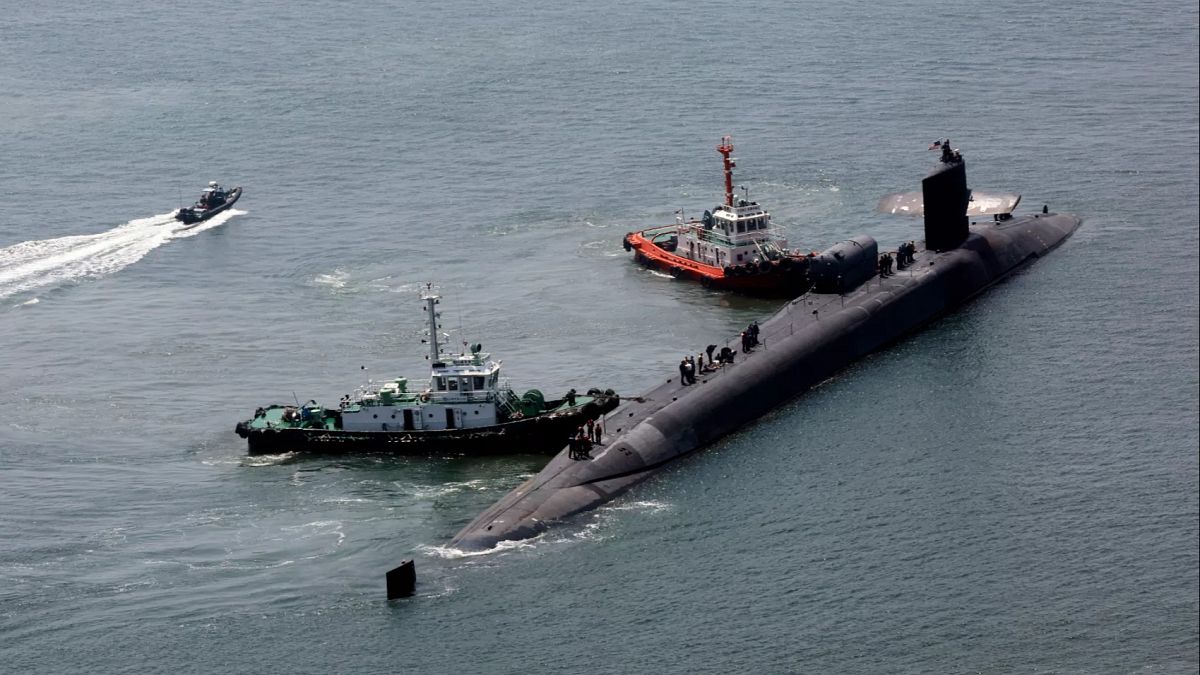

In a world that seems to be continuously shaped by strategic decisions and diplomatic exchanges, recent actions and statements by world leaders have contributed to an intricate tapestry of geopolitical shifts. As calm resides over the surface, the undertones of these actions suggest a dynamic environment, with each message and movement closely analyzed on the international stage. Let’s delve into the unfolding situation with a sense of calm and clarity.
In a significant development, former U.S. President Donald Trump announced the repositioning of two nuclear-capable submarines towards proximity with Russia. The decision was relayed through social media platforms, highlighting the former leader’s response to what he described as “provocative statements” made by Dmitry Medvedev, former President of Russia and now Deputy Chairman of the country’s security council. Medvedev’s remarks were perceived as inflammatory, notably concerning sanctions and military presence in the region.
The repositioning of these submarines appears to be a direct counteraction to Medvedev’s recent social media posts, which suggested a potential for heightened conflict. This move adds a layer of strategic complexity to the U.S.-Russia relationship, already entrenched in a long-standing and multifaceted dynamic. Importantly, this transition has been positioned as a measured response to emerging geopolitical narratives, rather than an escalation in military posturing.
Meanwhile, recent events in Ukraine have cast a somber shadow over the international community. Kyiv observed an official day of mourning following a missile and drone strike that tragically claimed the lives of 31 individuals, including several children, the youngest of whom was two years old. These events have elicited widespread sympathy and have fortified the resolve of Ukrainian leadership. President Volodymyr Zelenskyy labeled the attack as “vile,” underscoring the ongoing calls for an augmentation of sanctions against Russia.
In a related domain of engagement, President Putin of Russia has openly communicated his willingness for peace negotiations concerning the ongoing conflict in Ukraine. The Russian leader’s overtures have been met with a pragmatic approach by President Zelenskyy, who reiterates Ukraine’s readiness for talks at the leader’s level. However, caution is exercised to ensure that any discussions are genuinely aimed toward establishing a lasting peace, rather than serving as a delay tactic in the theatre of war and diplomacy.
This complex web of communications reflects a broader dialogue within the region, with Ukrainian authorities advocating for more profound engagement at higher diplomatic levels. The underlying call is for a shift from technical exchanges and surface-level discussions toward substantive and earnest negotiations that could pave the way for tangible peace outcomes.
Parallel to these developments, the regional dynamics surrounding Gaza have also attracted international attention. A recent incident brought about a tale of survival, as a young girl from Gaza City received emergency medical attention after being struck by a bullet reportedly fired from an Israeli drone. This grievous event in the region punctuates the stark realities and human impact of conflict that continue to unfold in various parts of the world.
With evolving scenarios in Belarus, Russia’s mention of deploying hypersonic missile systems further complicates the security calculus in Eastern Europe. The deployment of the Oreshnik missile systems is perceived as a powerful signal, one that reverberates through the corridors of power in both Europe and the broader international landscape. As part of Russia’s strategic repertoire, these missiles have a storied history, previously deployed in competitive narratives against Ukraine.
What emerges is an intricate mosaic of tactical movements, strategic speeches, and political overtures. Each piece, while seemingly isolated, contributes to the larger geopolitical picture. Through this lens, the international community continues to navigate these challenges, striving for balance and seeking avenues towards lasting peace and mutual understanding.
Source: {link}
